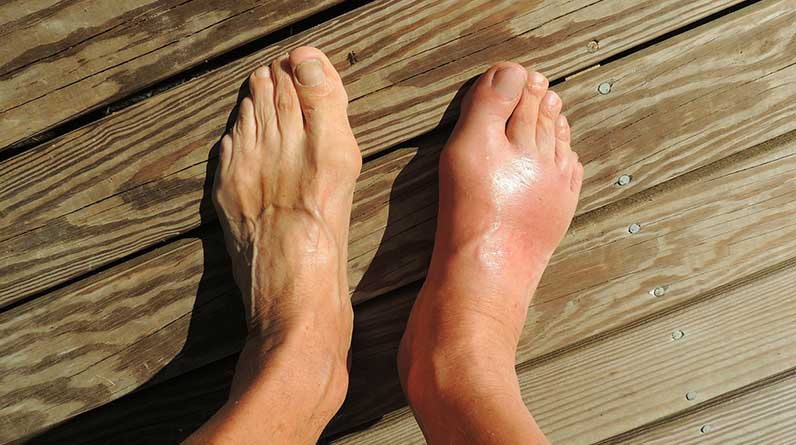
Understand What Causes Arthritis to Develop in Your Joints
Different types of arthritis are caused by various factors. Learning about the risks and predisposed causations of these debilitating conditions can help you navigate away from them or manage them more effectively.
Some can be avoided, and the onset of others can be delayed well into the golden years. Moreover, some types of arthritis can be slowed to a halt. But the question is, where does it start? Why do you have this terrible condition?
A Stew of Arthritis Risks
What will cause your joints to weaken and be prone to functional decline? There’s a myriad of reasons why you can develop arthritis, and they range from inflammation to genetics.
Moreover, autoimmune complications can lead to progressive worsening of the existing conditions, making your life even harder. From a collection of research and experimentation, the main risk factors have surfaced.
Genetic Predisposition
Human leukocyte antigens (HLA) are abnormal genes present in your sixth chromosome if you have a family history of arthritis, especially rheumatoid arthritis, ankylosing spondylitis (AS), and juvenile arthritis.
HLA genes play a crucial role in the immune system as they produce proteins that stimulate the receptiveness of cells in the body. Cells need to be able to receive nutrients and vitamins and repair themselves.
These genes can have a functional abnormality, or they can be harmed by an over-responsive immune system that stays alert for too long. The proteins released by these genes act to assist the immune system to distinguish between normal bodily proteins and invaders, such as viruses and bacteria.
The bottom line is that your risk for developing arthritis is inherently increased if you have a family history of this specific genome deformity.
Cartilage Weaknesses
Most often found in osteoarthritis is the inherent weakness of cartilage, which is the soft tissue between the bones. This can be caused by genetic factors, but it’s most often caused by wear and tear when you overuse the joints.
Repetitive movements have been the main instigator of joint weakness. Activities such as typing, stair climbing, and jogging can cause this problem.
Perhaps your job required repetitive, hard labor for years, and this places you at risk for osteoarthritis.
Nutritional Factors
The College of Rheumatology in San Francisco confirms that a major cause of rheumatoid arthritis and gout is poor nutrition. Many foods promote inflammation, whereas others increase your levels of uric acid, resulting in painful crystallization.
Certain foods like red meat, refined sugars, processed foods, and high-fat dairy are some of the bad actors, increasing the risk of gouty arthritis. Your stomach and the immune system are far more fragile than you may believe.
What you eat will ultimately increase your risk for many unwanted health disorders. The stomach has trillions of bacteria inside that make up the microbiome. These bacteria help the immune system function correctly.
Any imbalance in stomach bacteria leads to a dysfunctional microbiome, and diseases are a common result.
Injuries and Overworking the Joints
Some injuries put you at a higher risk for developing osteoarthritis later in life, even if they appear to be healed. This is particularly true for knee injuries because the past always haunts people in their golden years.
Sometimes, injuries aren’t as straightforward as the twisted ankle or torn ligament you had as a child. Many times, overworking or misusing joints can cause unrecognized injuries, which predispose you to the development of arthritic disease, and you don’t even know that you had a problem.
Sedentary Behavior
Did you know that being sedentary could predispose you to arthritis? It can also worsen arthritis because regular joint exercises keep your joints healthy and mobile, much like an oiled engine.
Sedentary behavior promotes inflammation, and it increases your risk for chronic autoimmune disorders like rheumatoid arthritis. Being inactive can lead to the accumulation of visceral fat, leading to chronic inflammation.
This type of lifestyle can also increase chronic fatigue and lay waste to muscles and soft tissues.
Autoimmune Disorders
However, the largest concern for arthritis is autoimmune malfunctions where the immune system attacks and depletes healthy cells. Your immune system is supposed to protect and preserve you, but it can also become an enemy.
Early-Onset Symptoms
What early symptoms can you look out for to avoid further progression?
• Unexplained fatigue (activities, sex drive, and productivity)
• A persistently mild fever that accompanies fatigue
• Unintentional weight loss
• Unusual stiffness in any joint
• Joint pain
• Swelling around the joints
• Redness that accompanies the inflammation
• Joints that feel warm to the touch
• Numbness or tingling sensations
• Any of the above symptoms on both sides of your body
Tally your risks, and make notes of the symptoms you experience before visiting your physician for an evaluation.
Final Thoughts
You might not be able to avoid all the risks, especially genetic factors, but you can avoid the lifestyle risks. This allows you to target your management on a cellular or natural level, possibly allowing you to decrease or even stop some medications for your arthritis.





